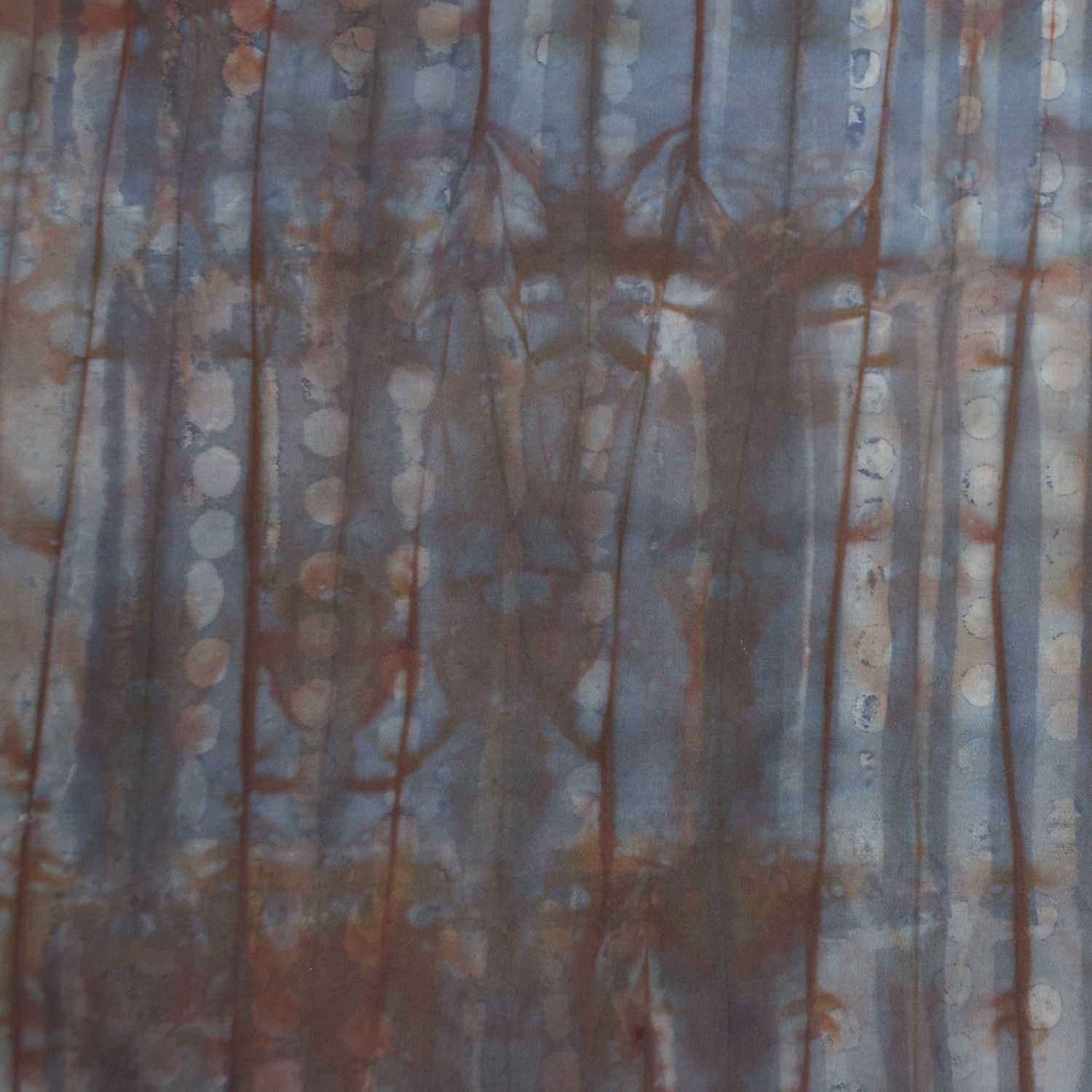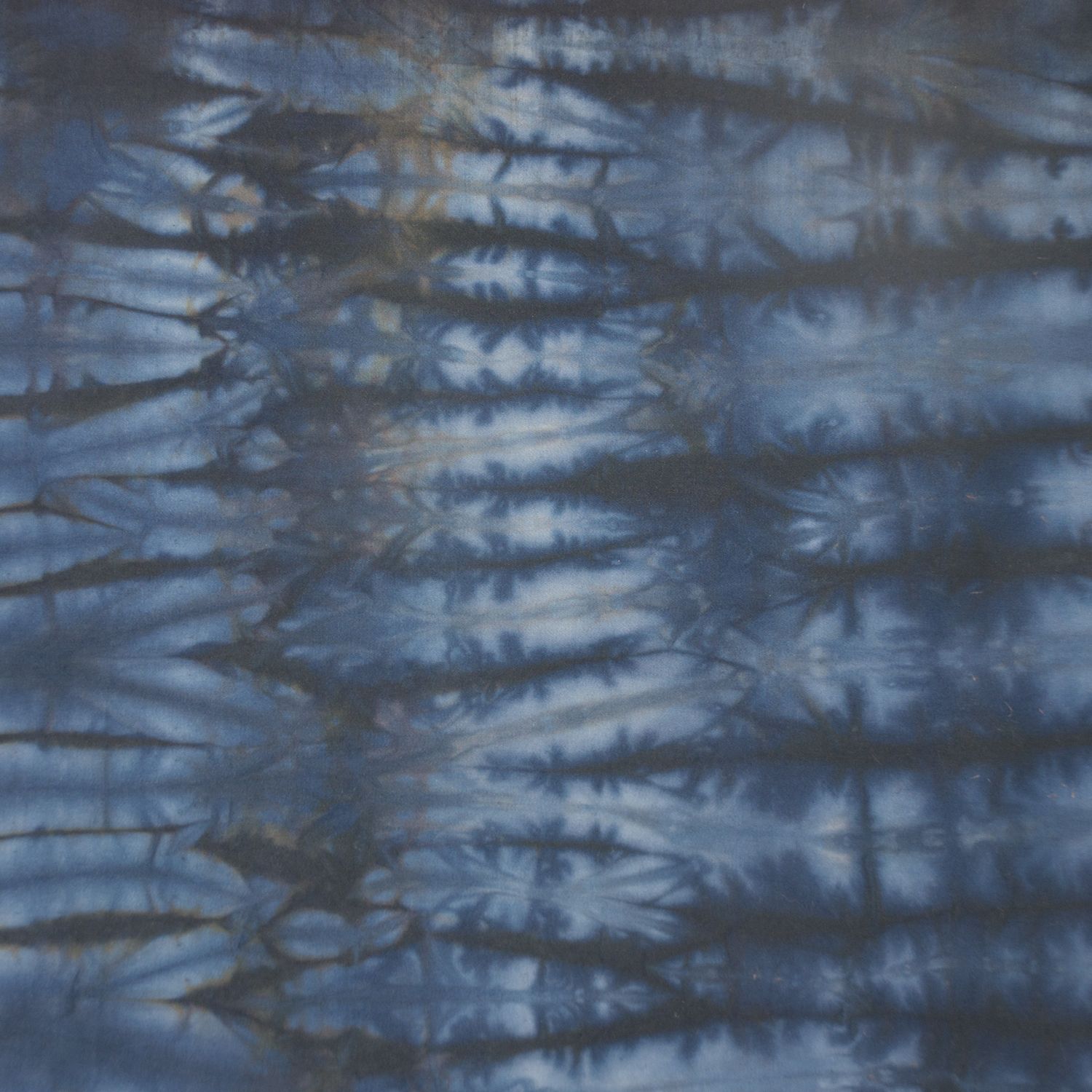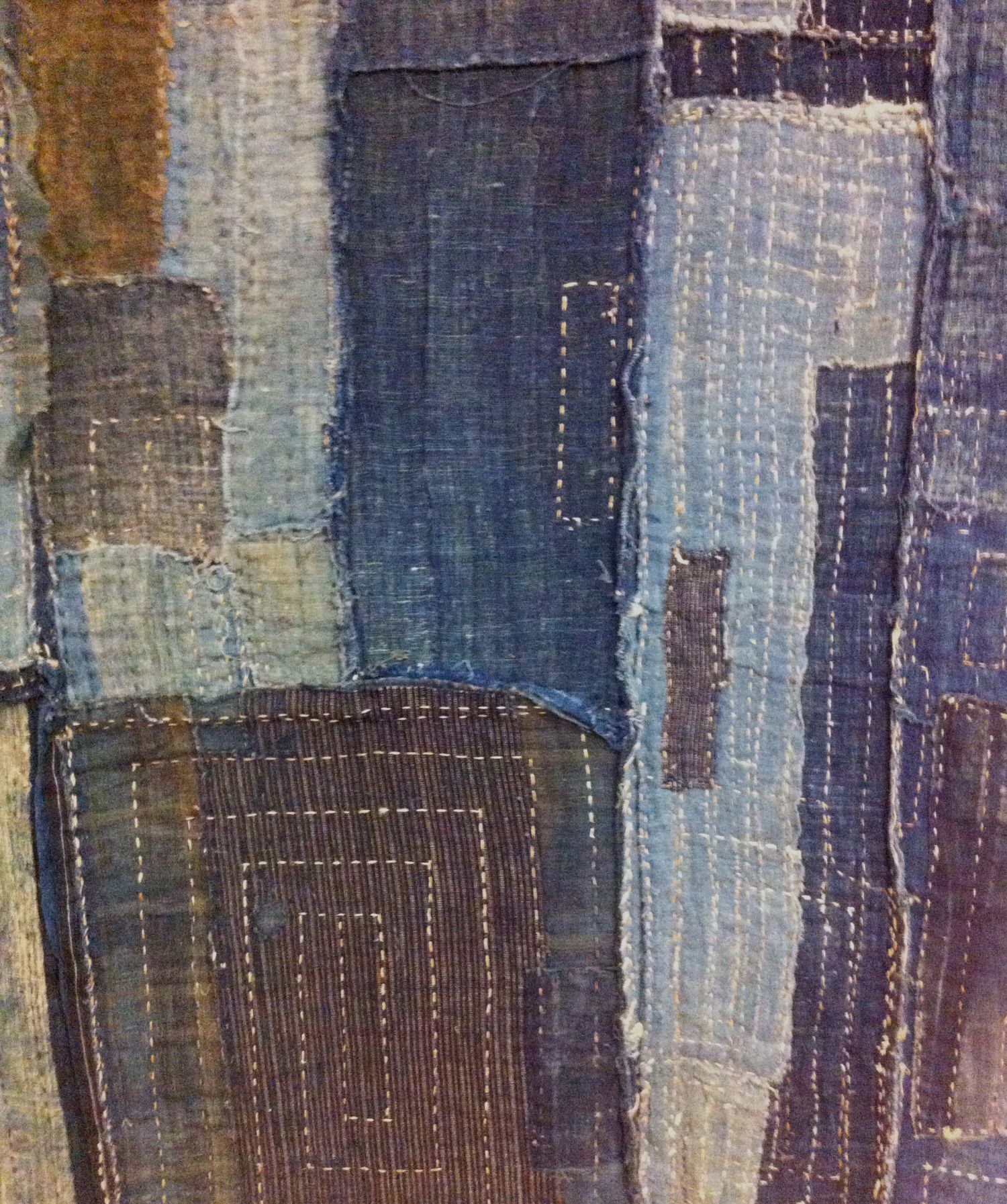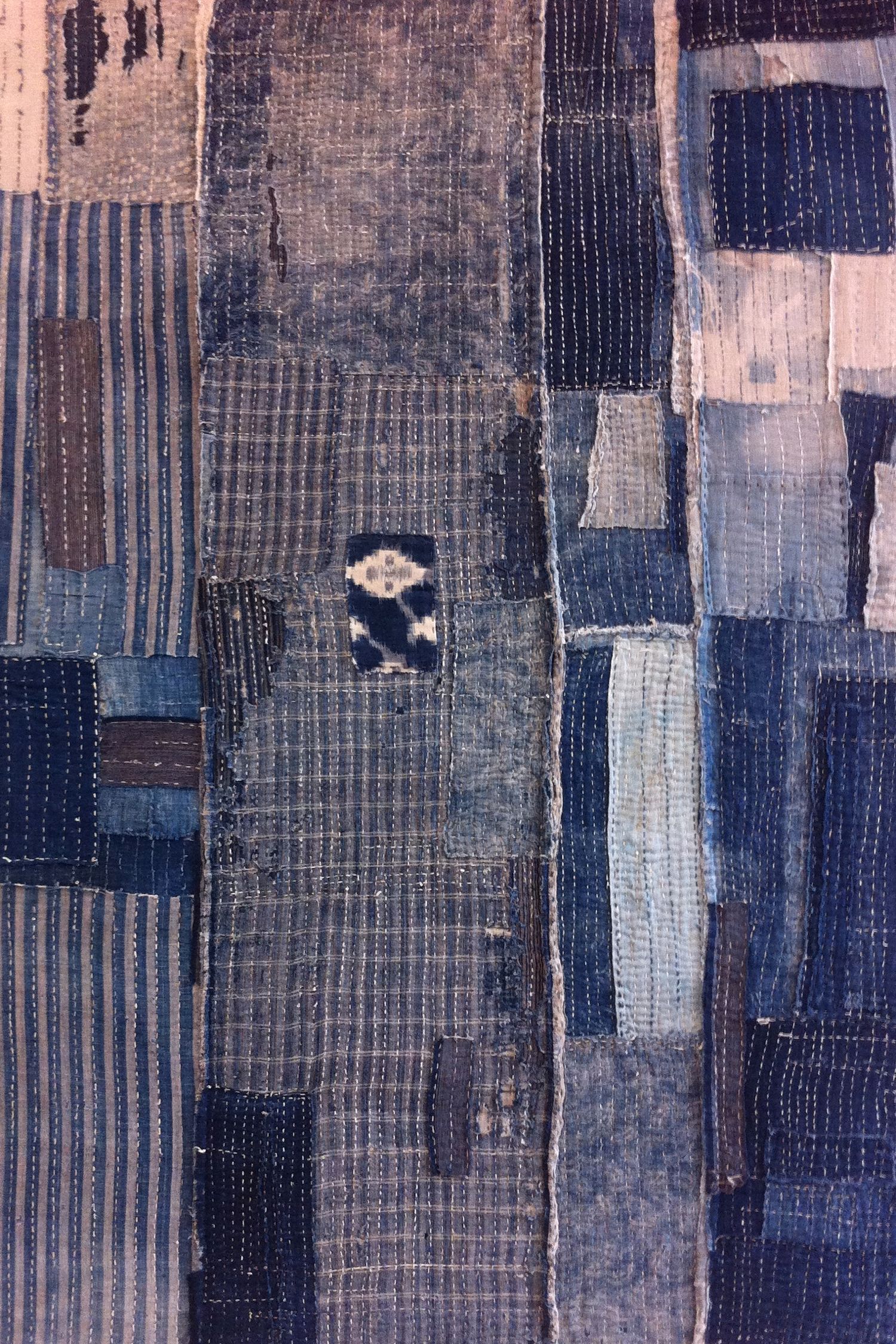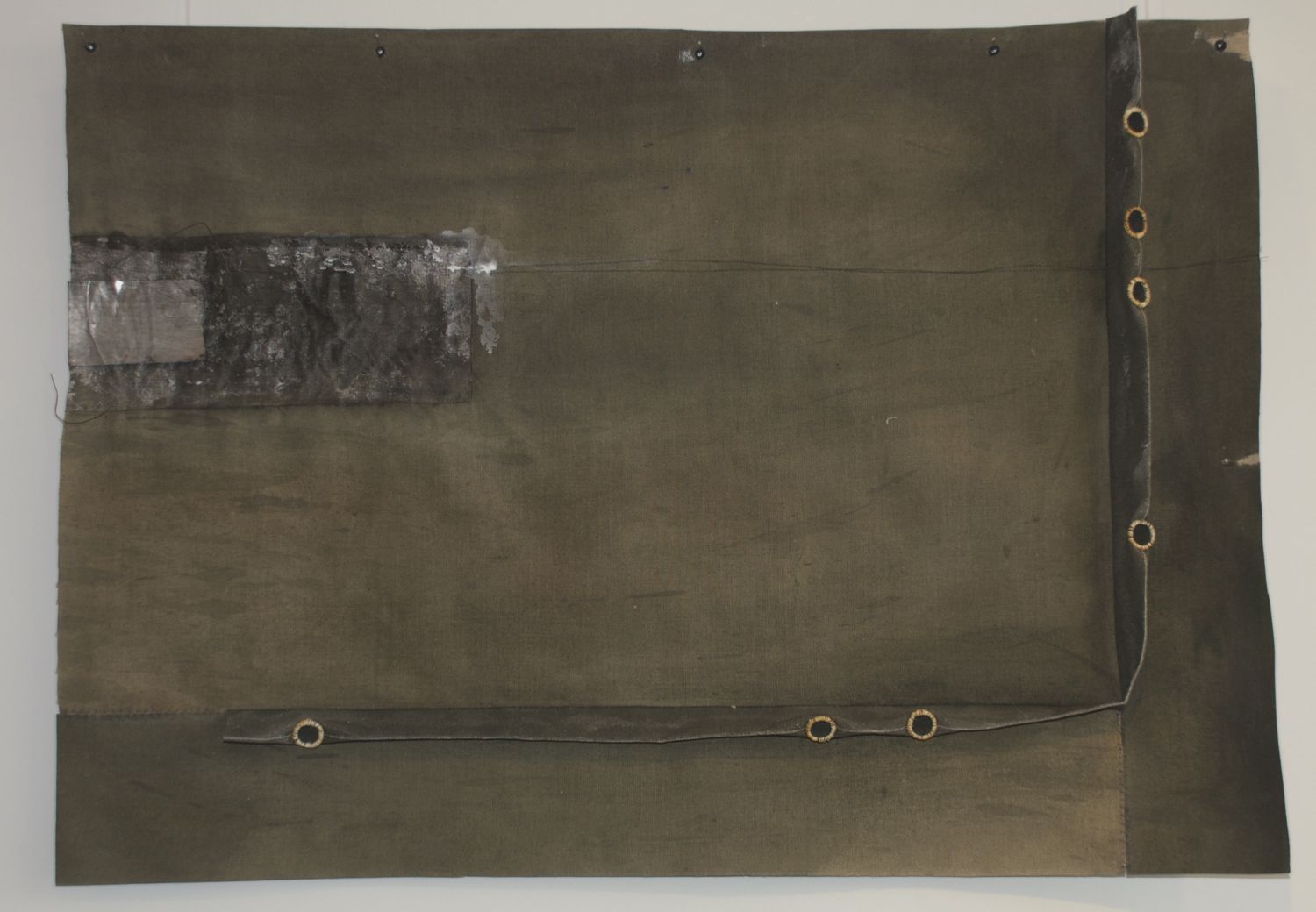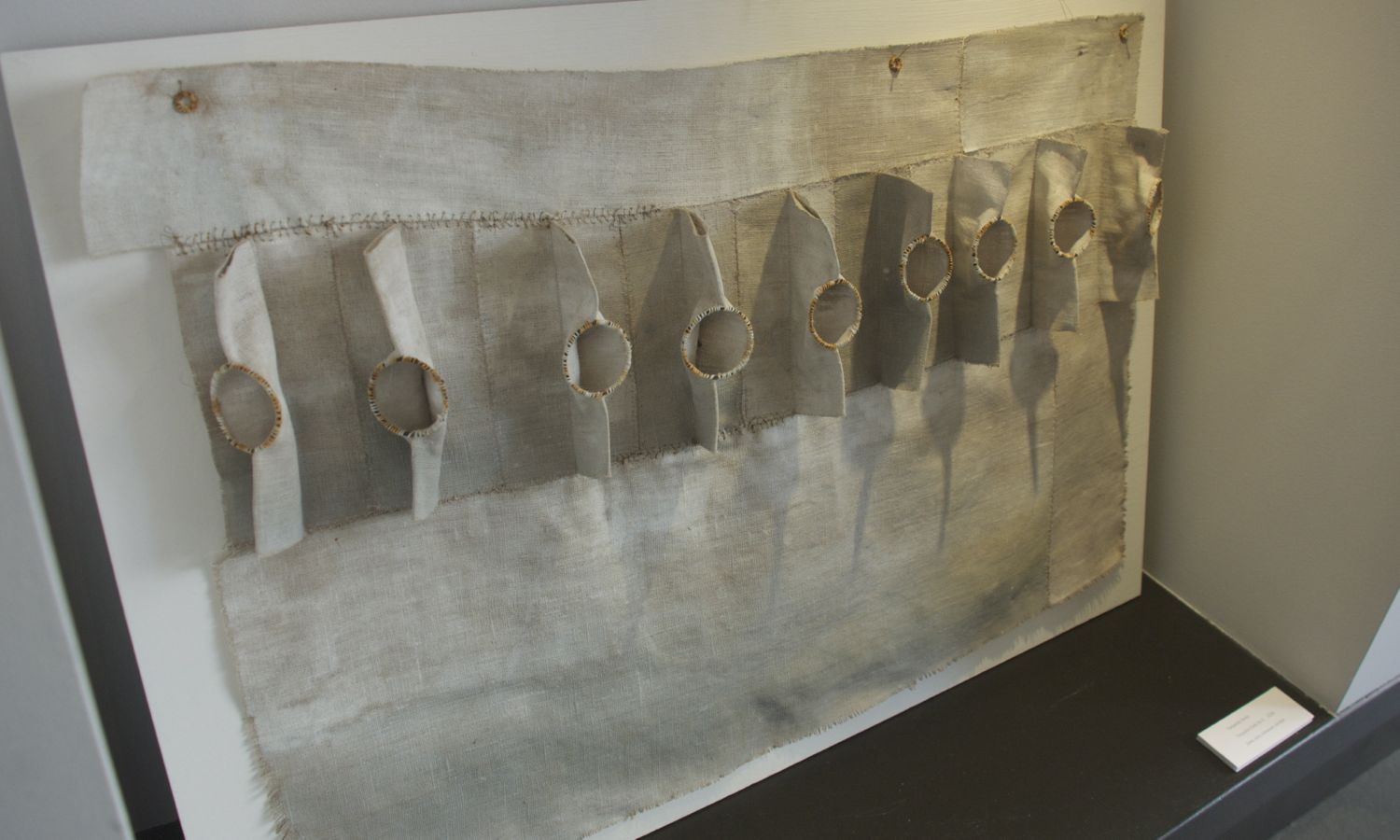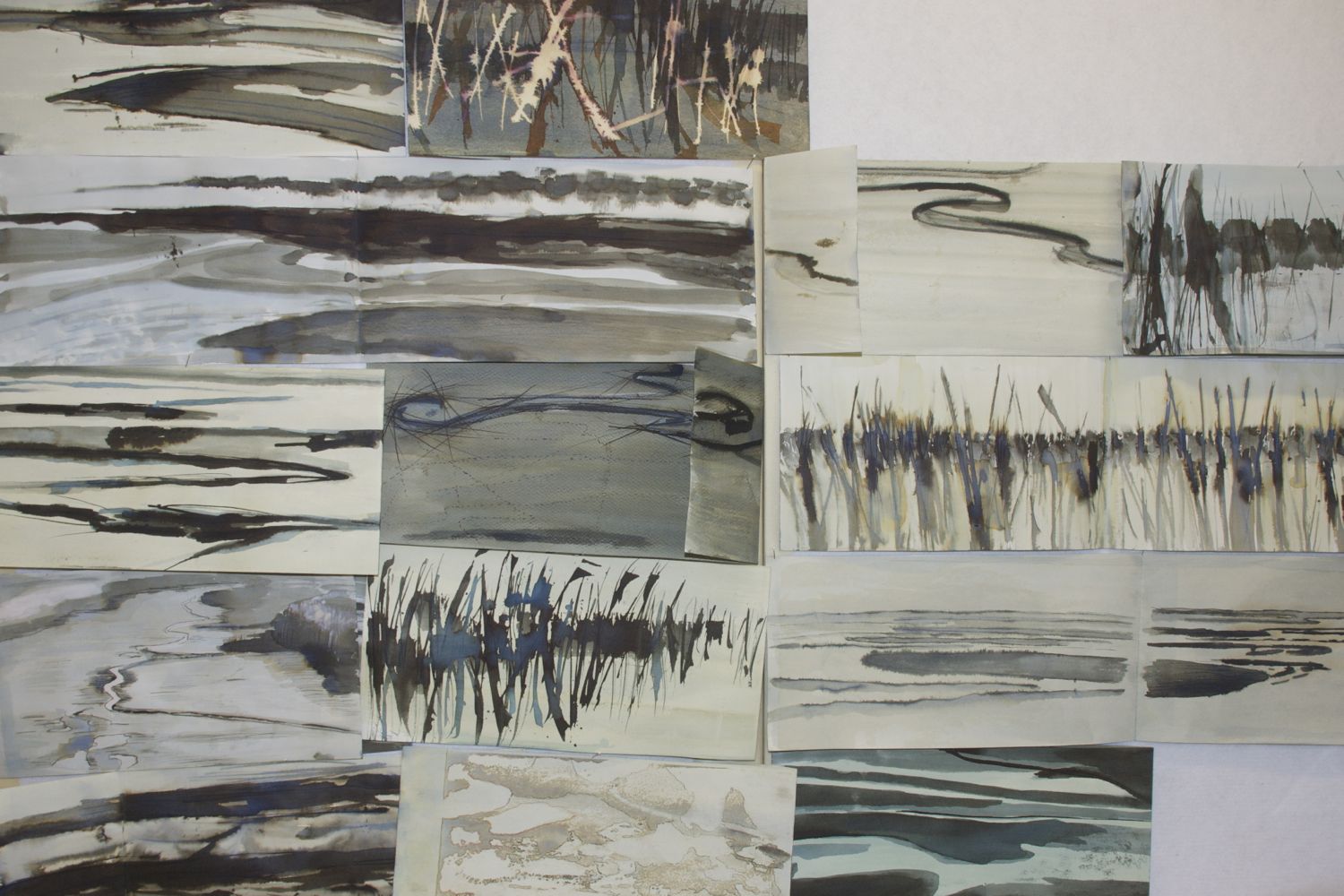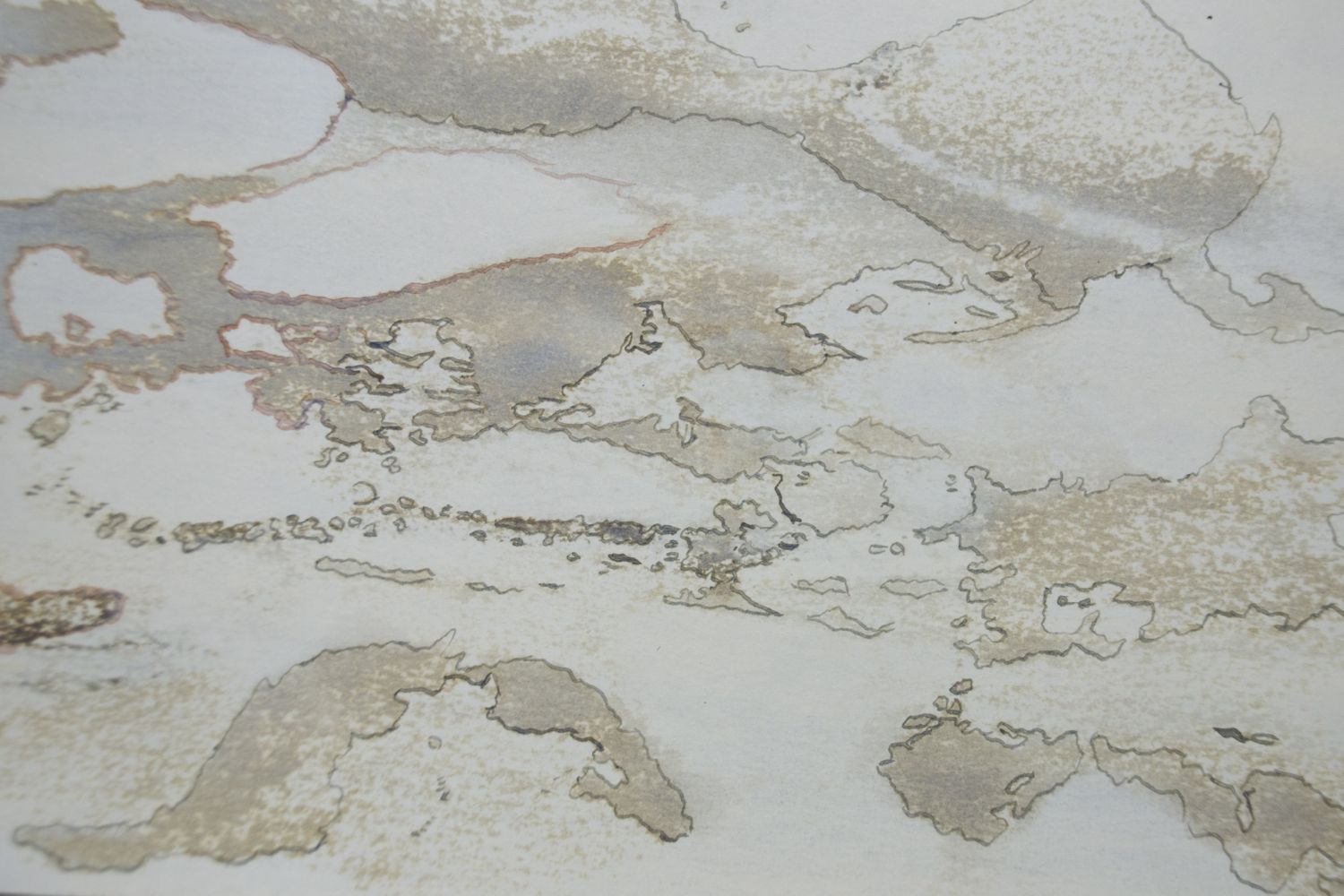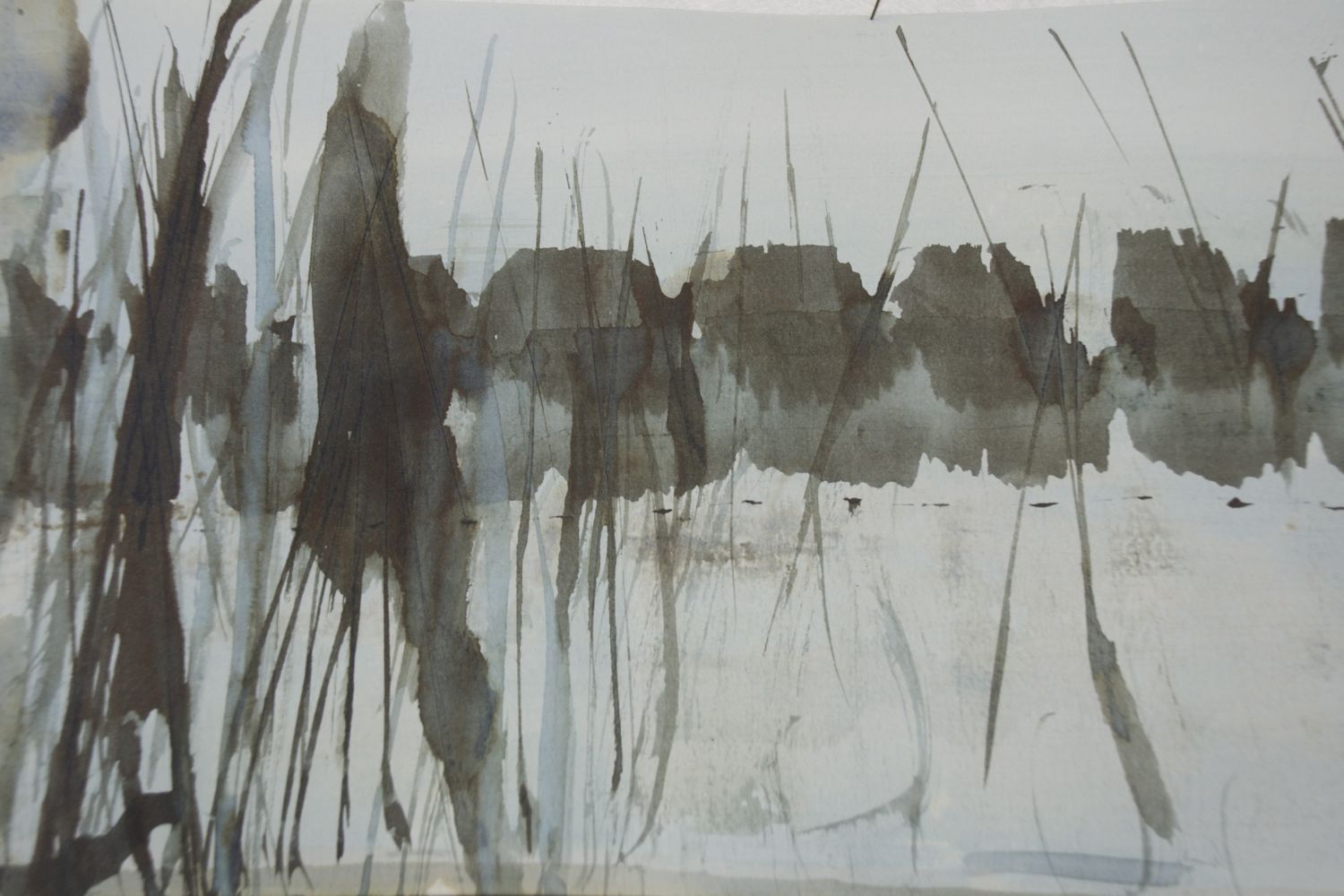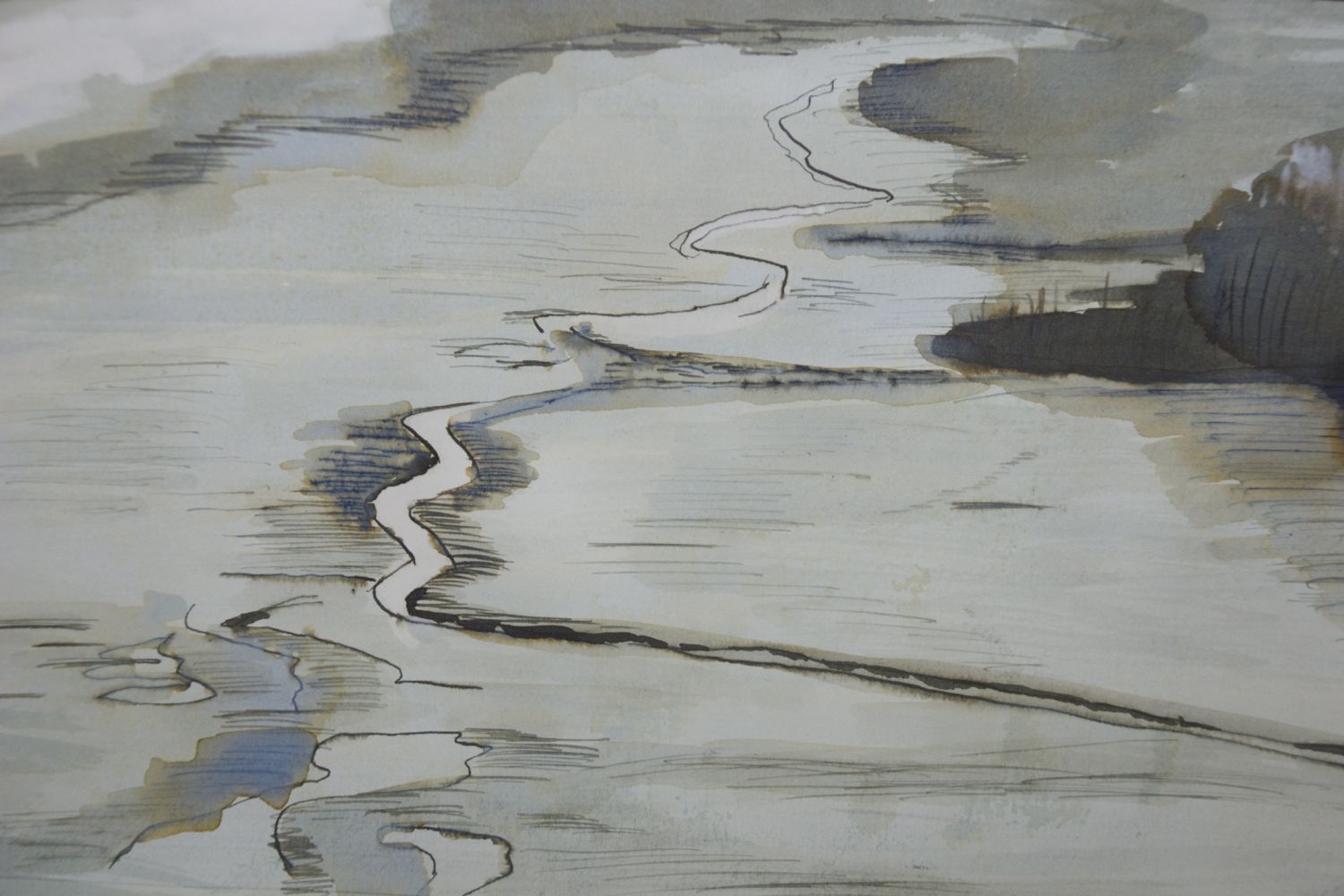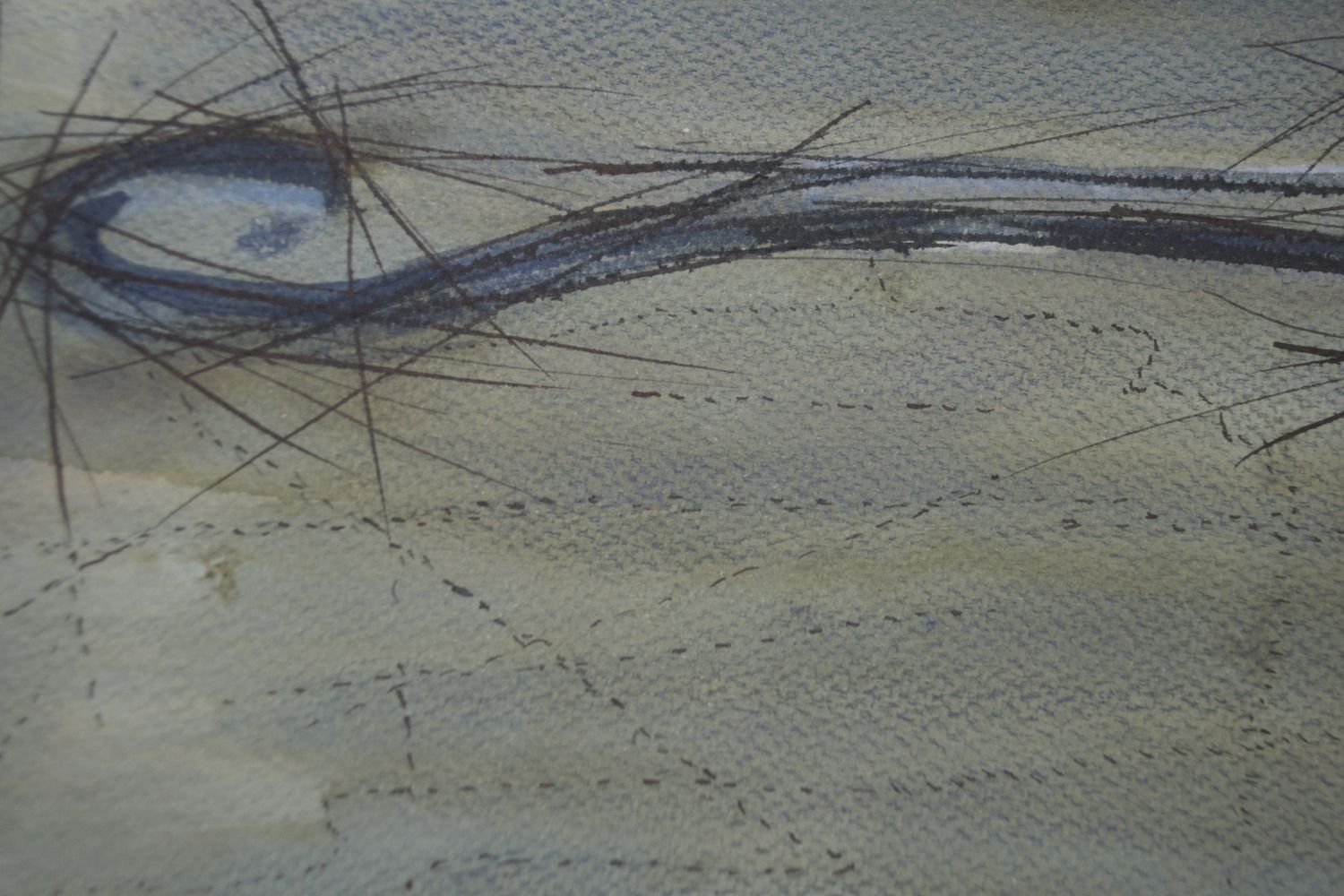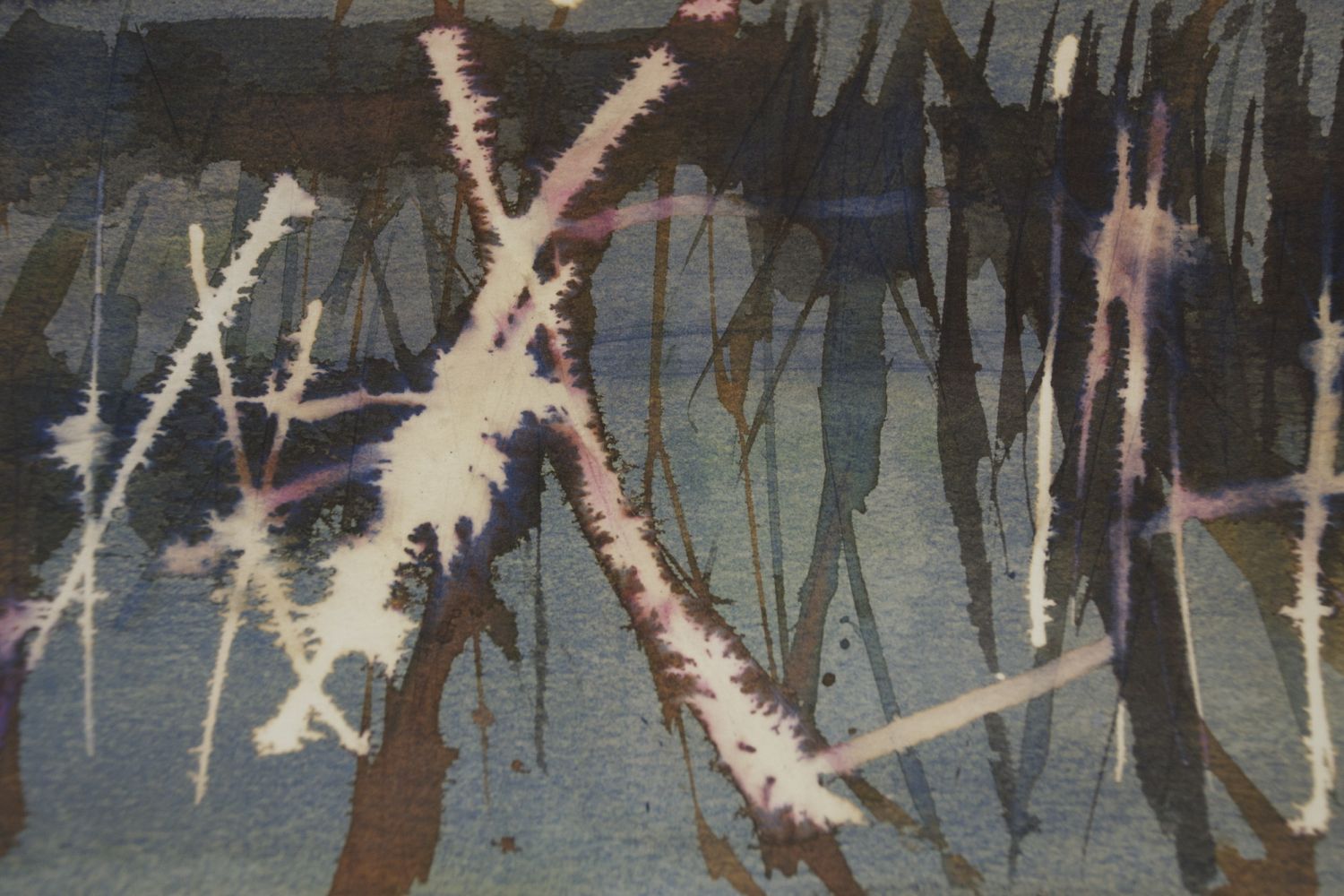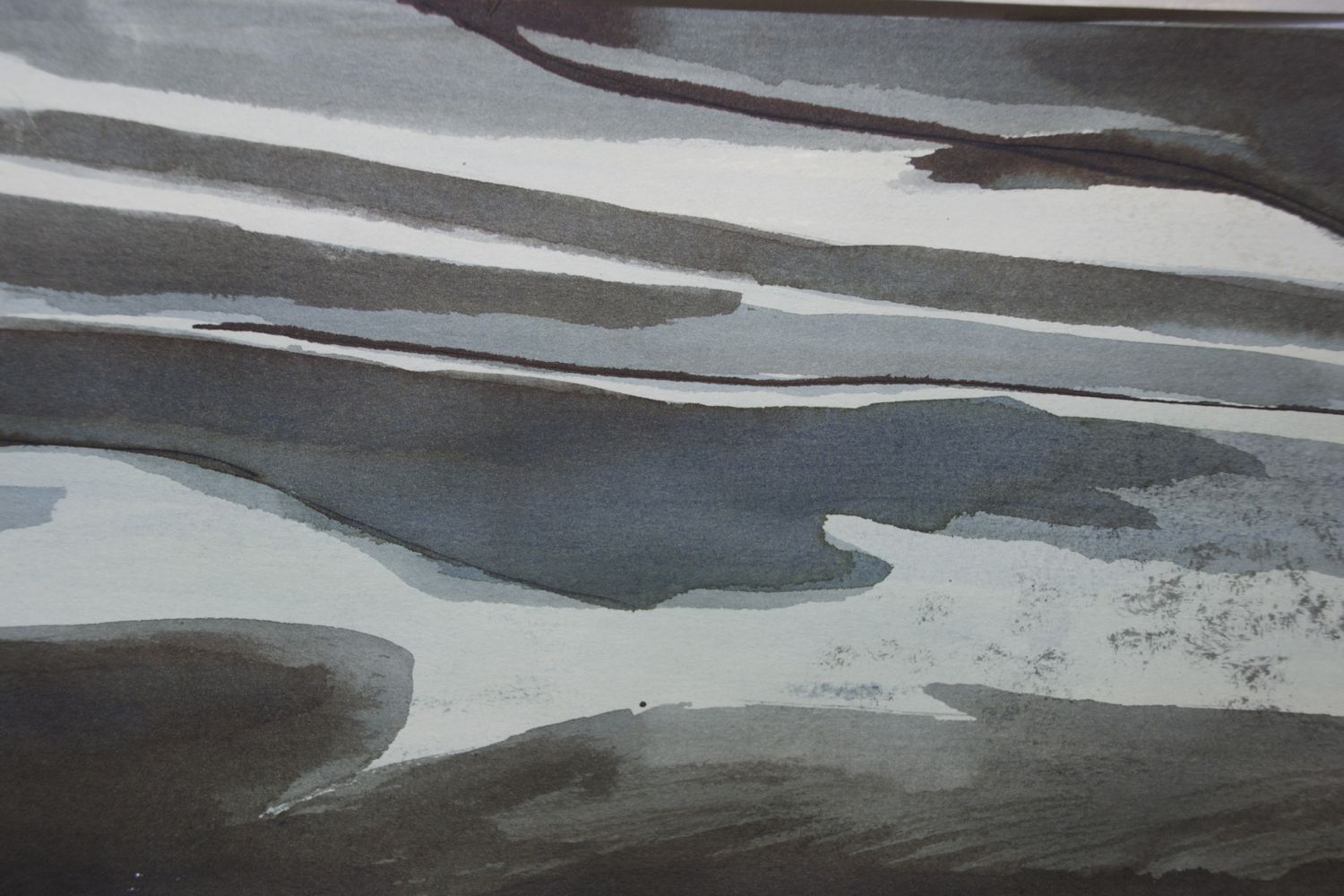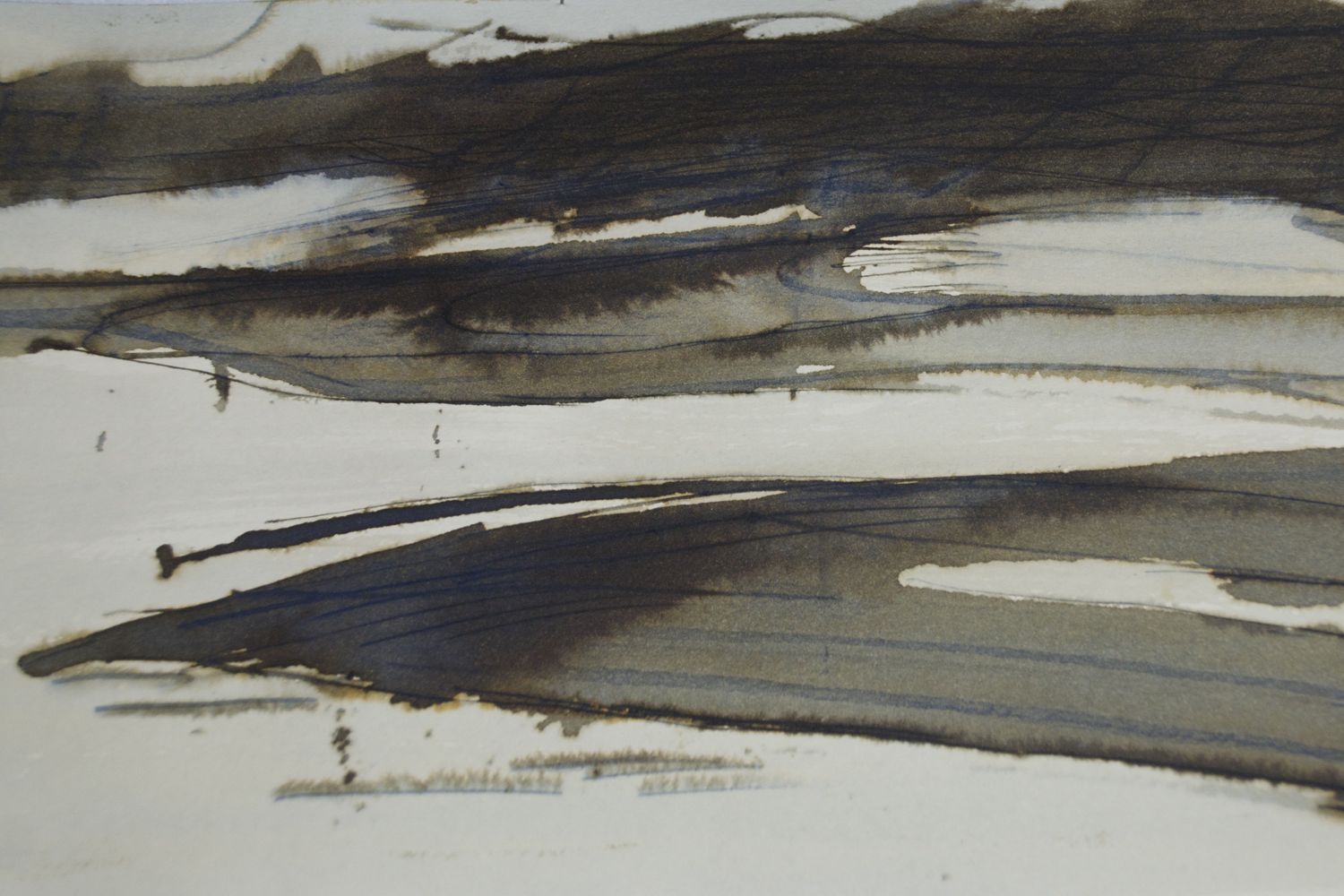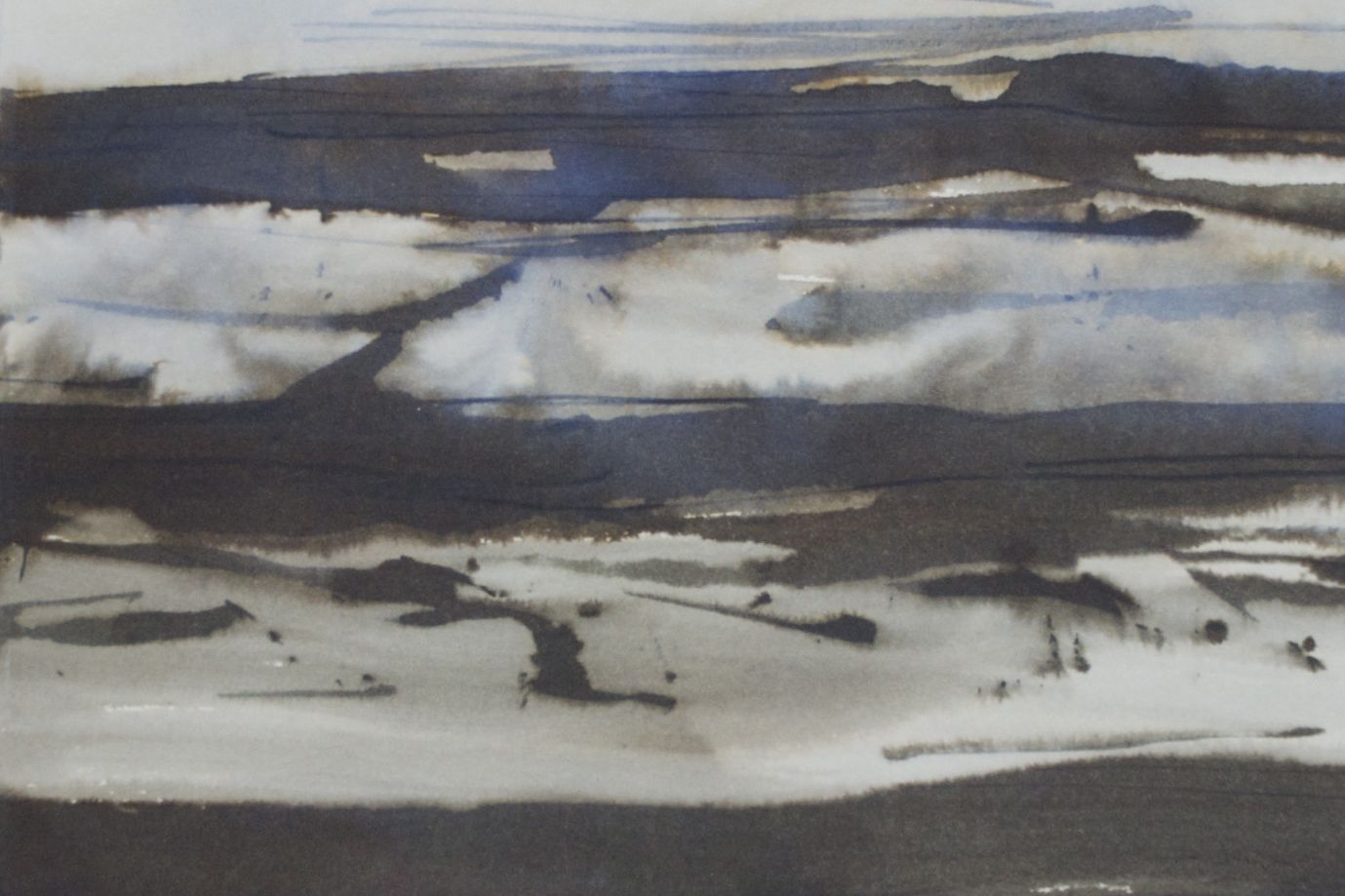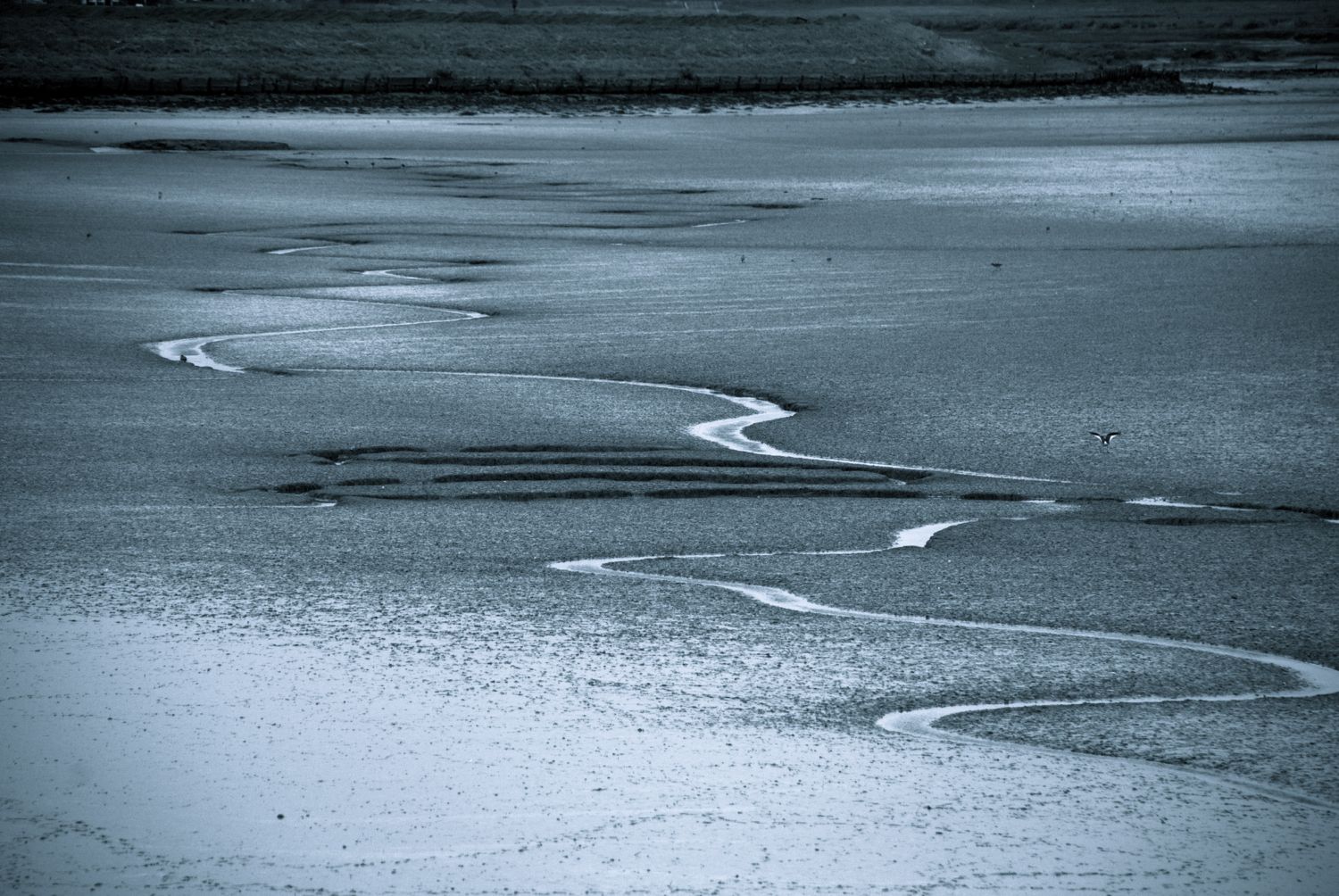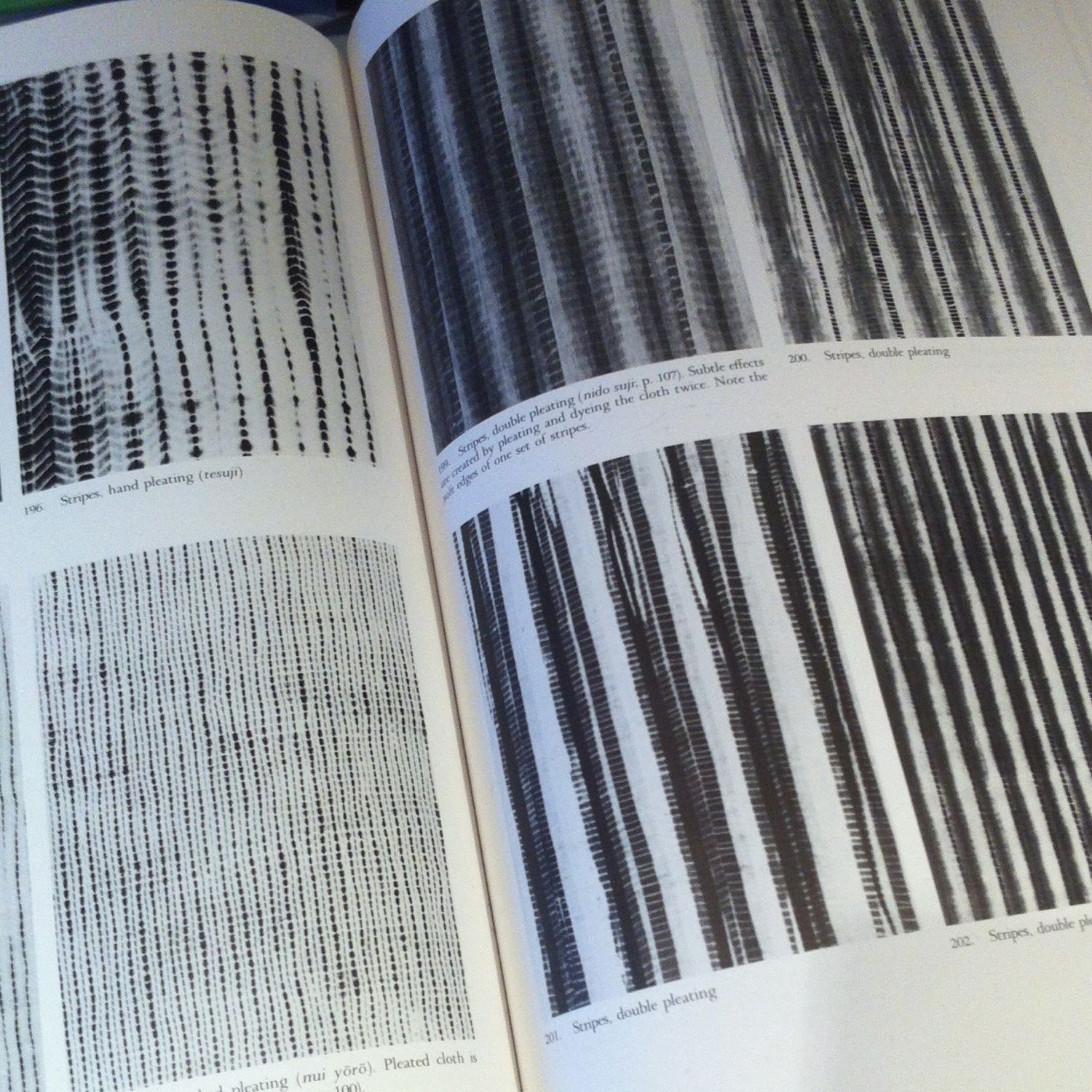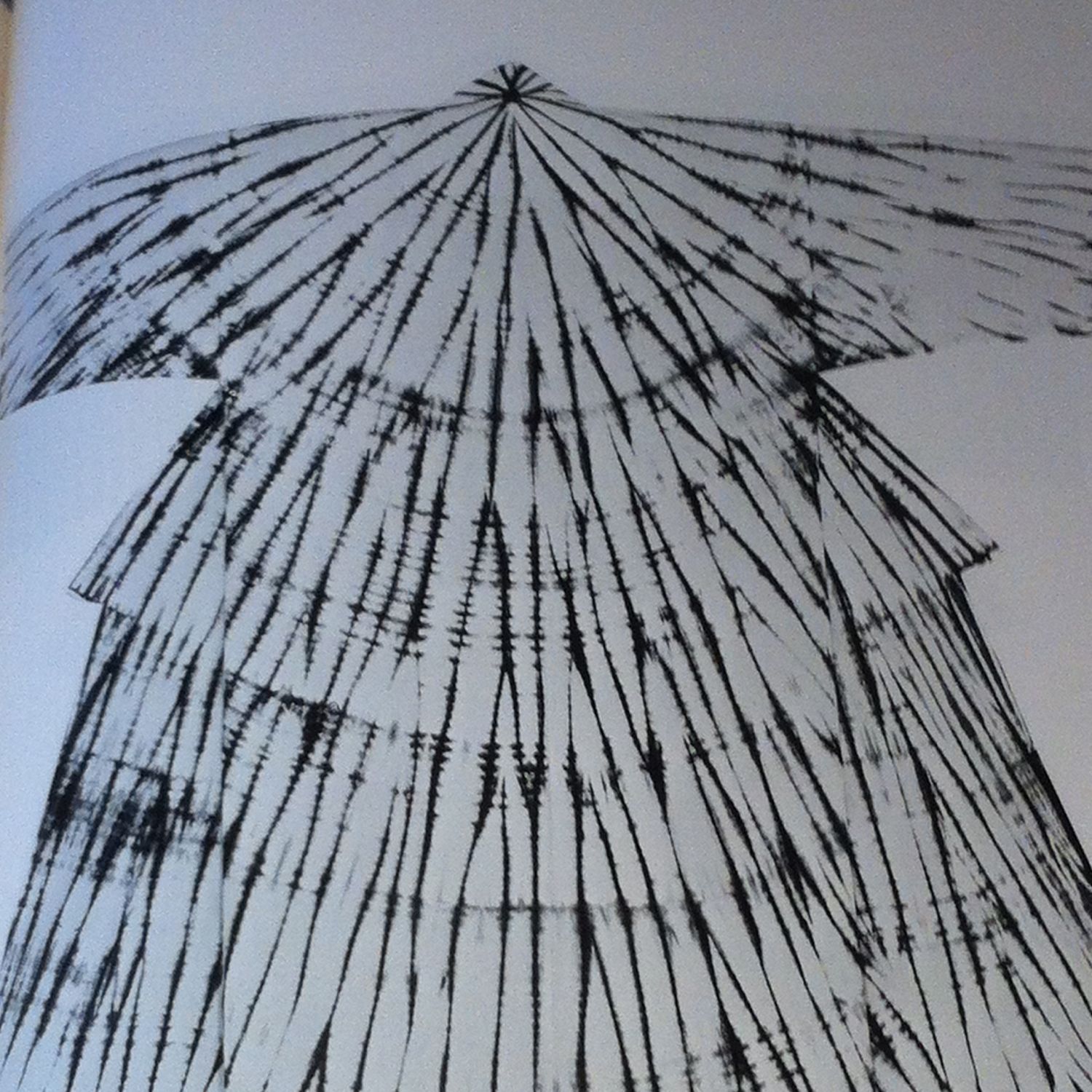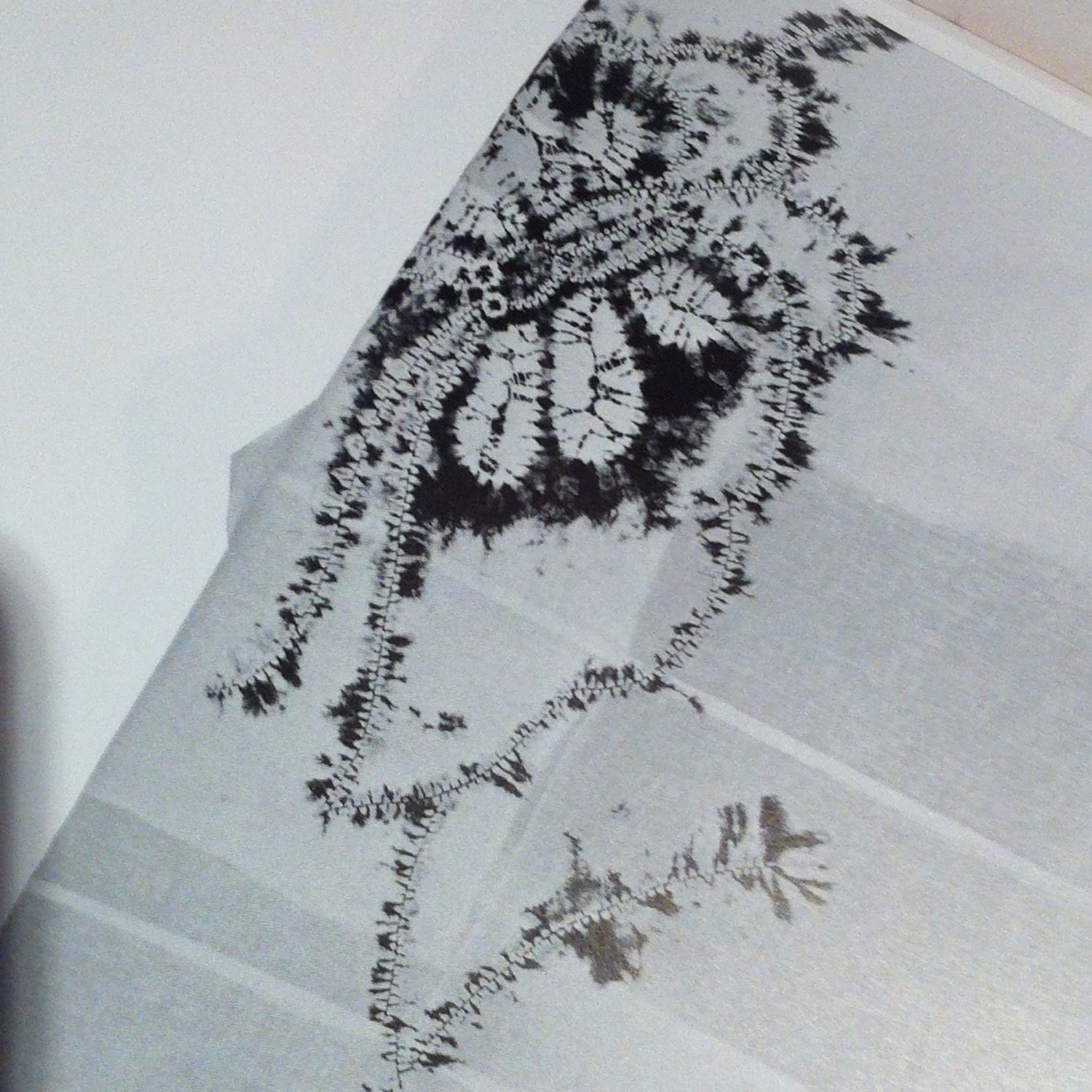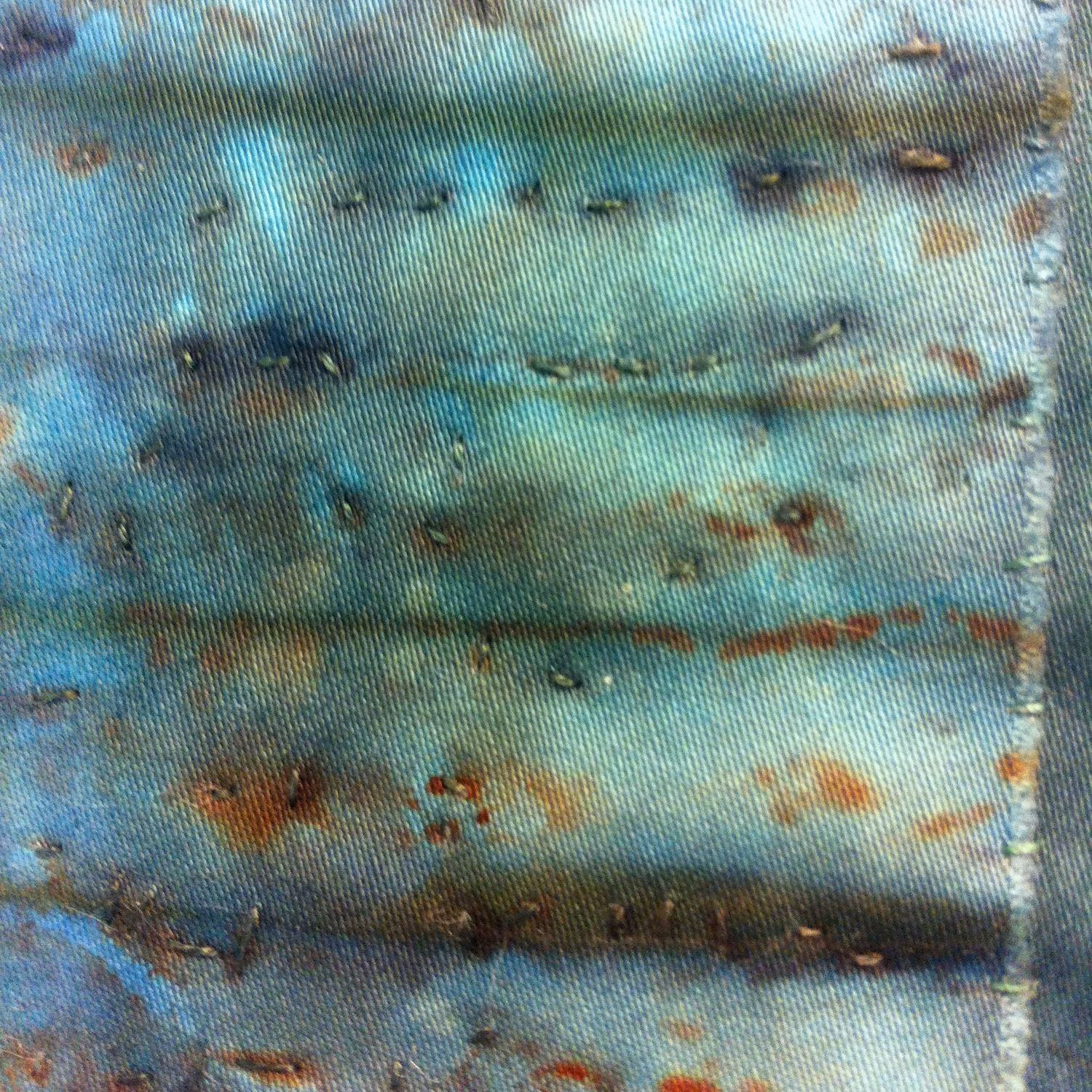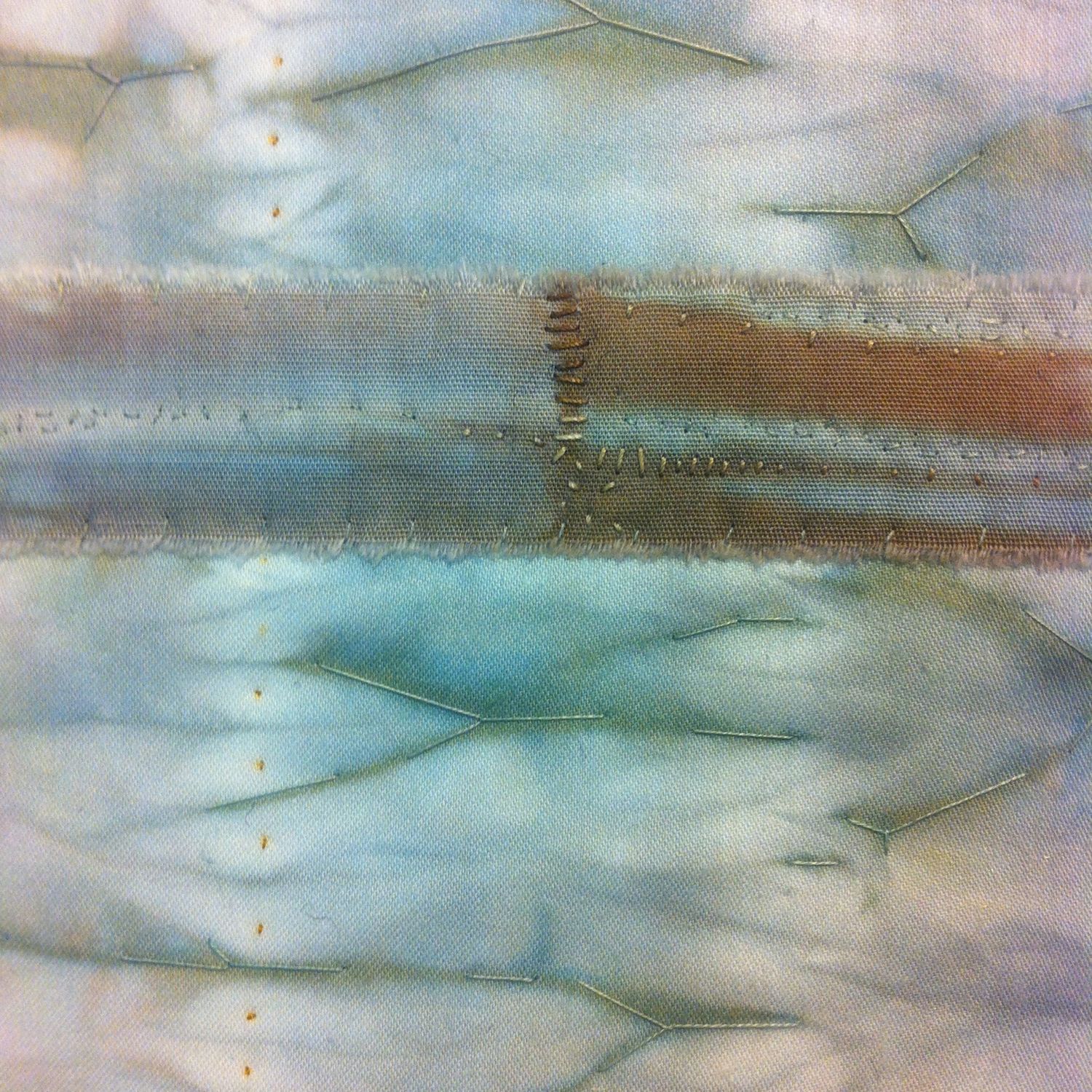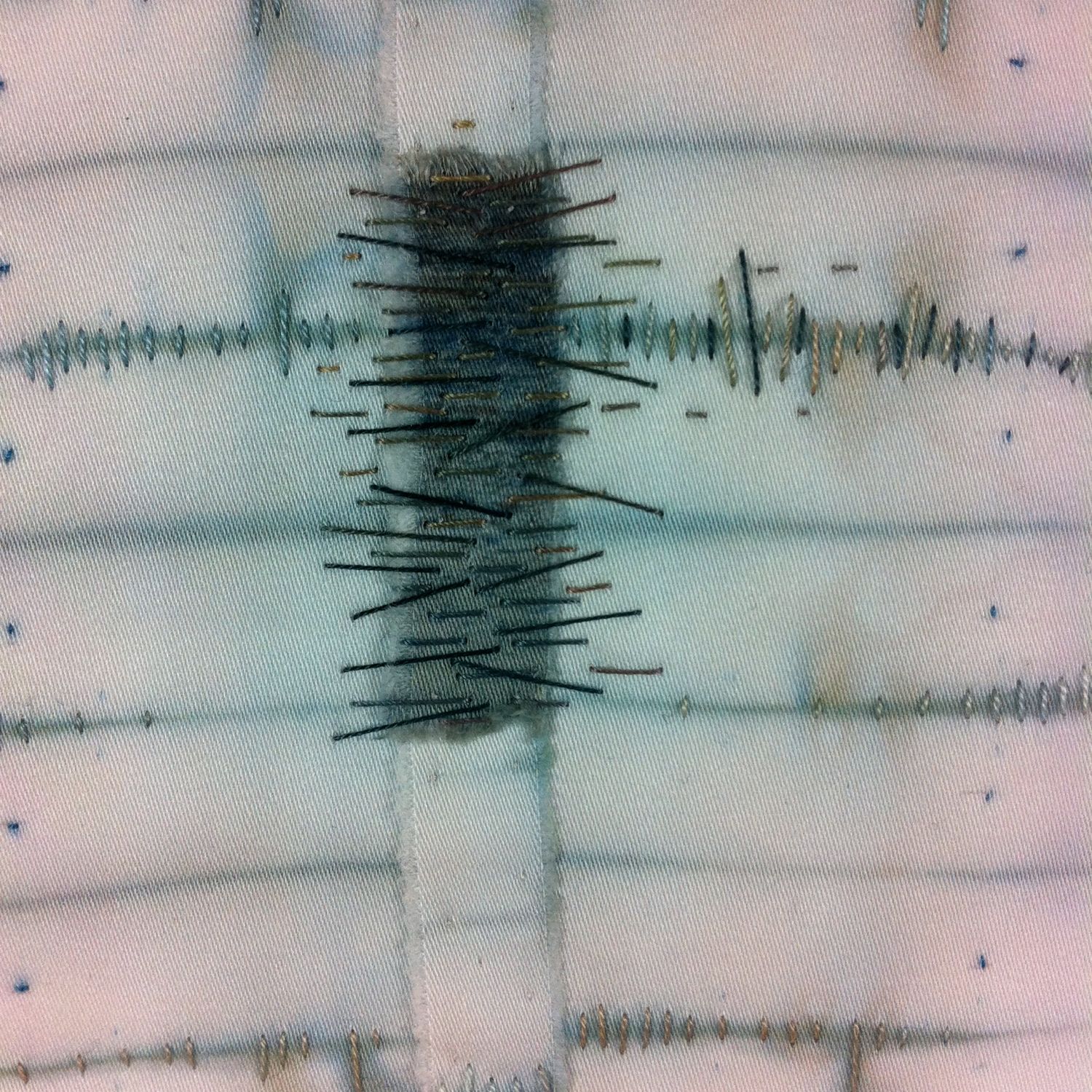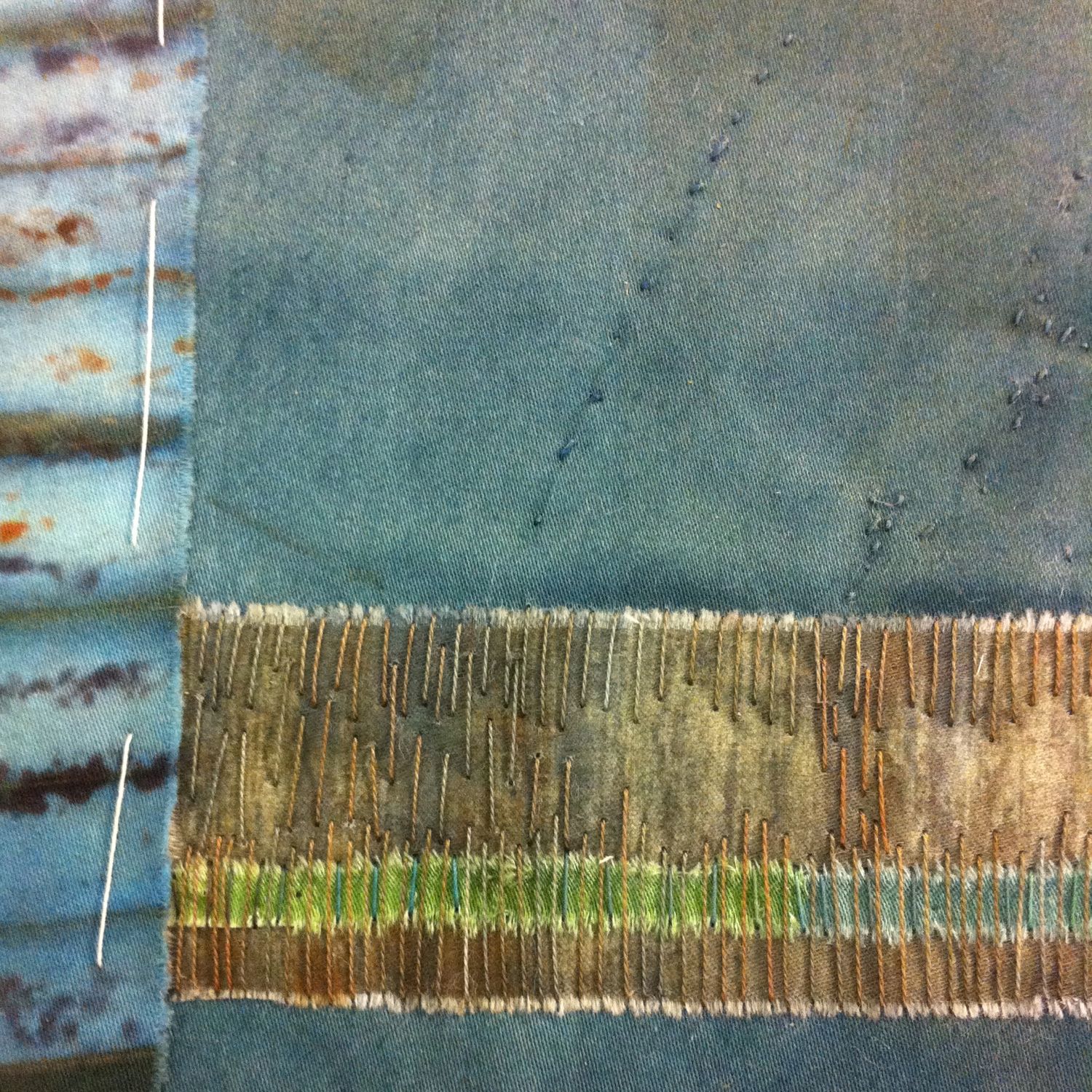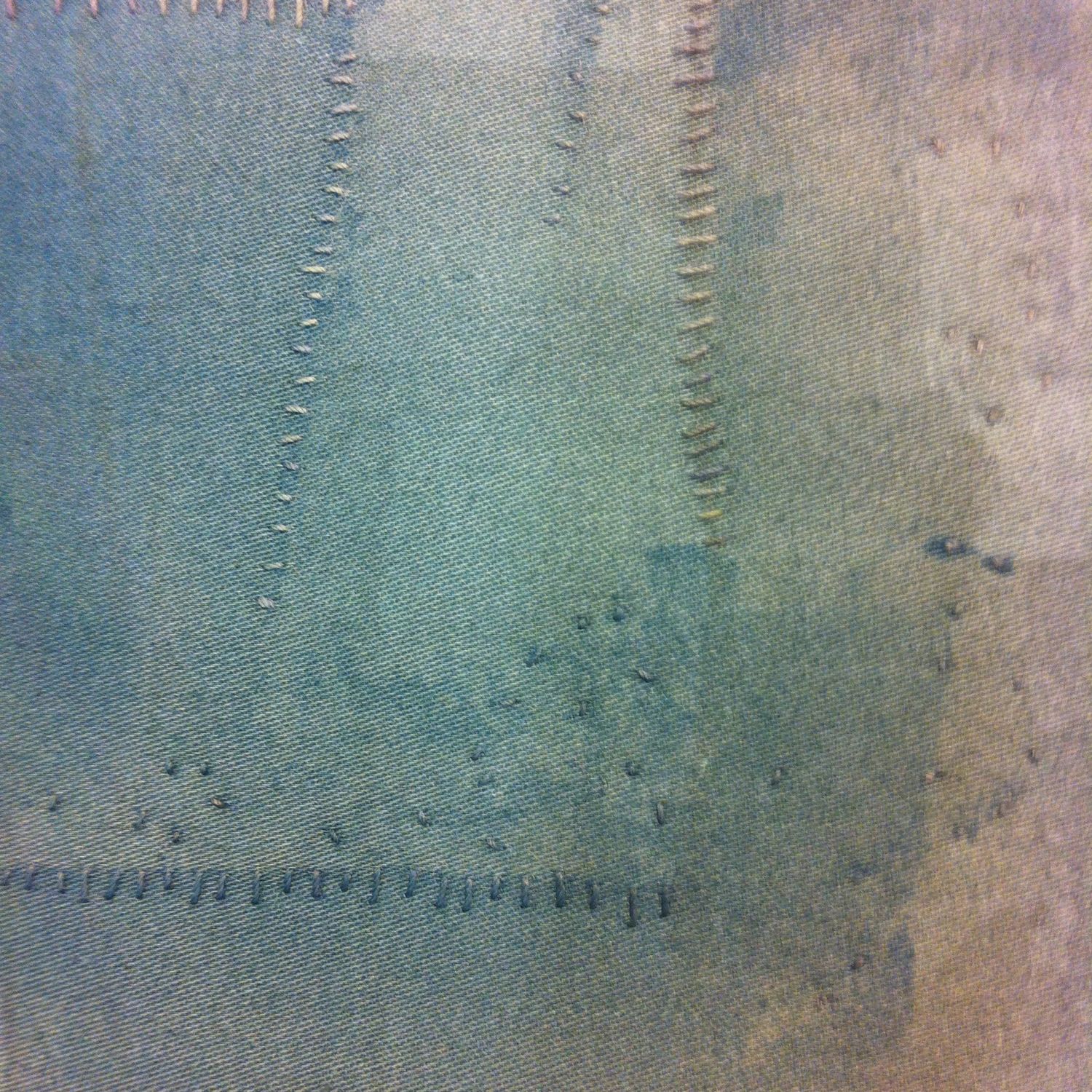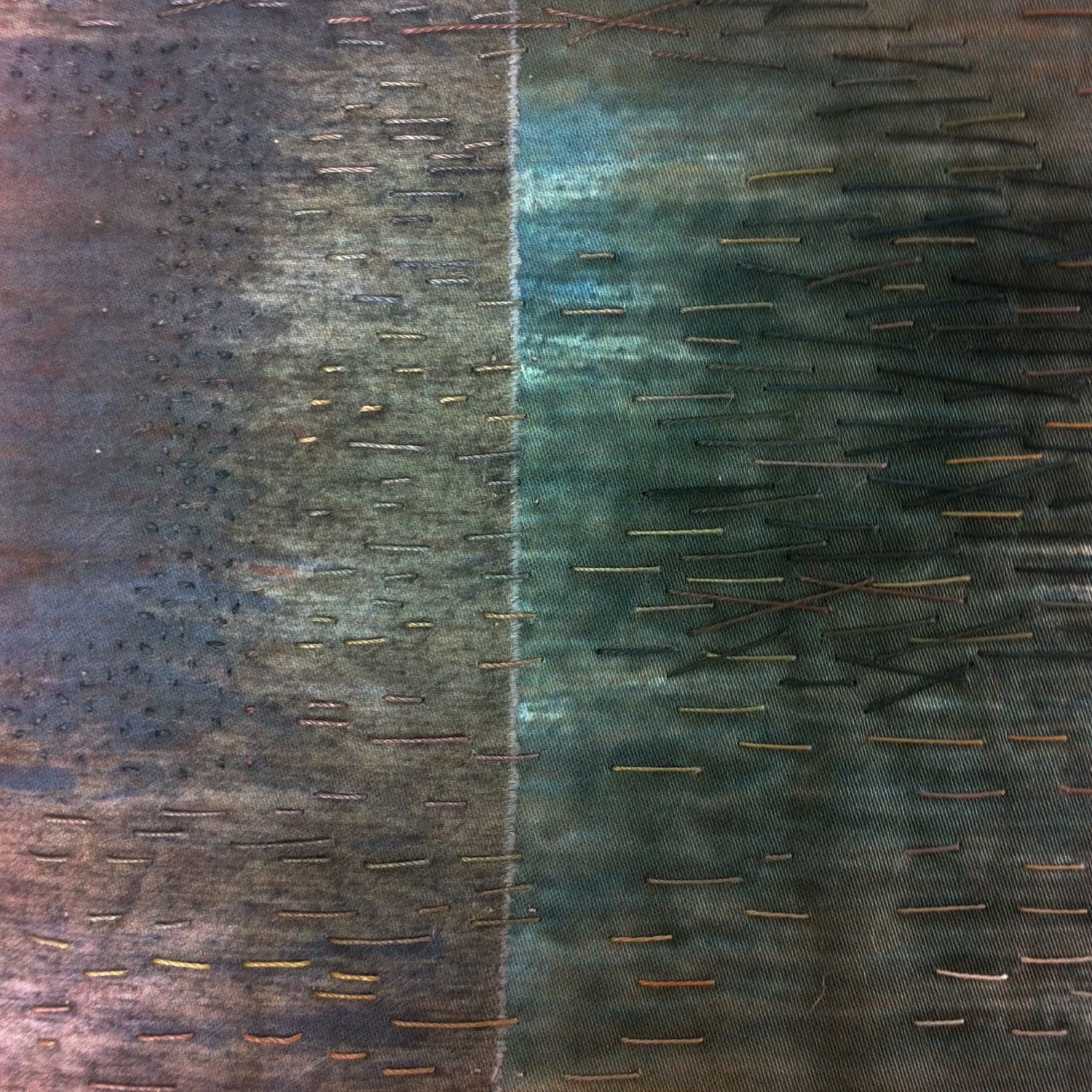“It’s important that we lose pieces. You get there faster, I think, by losing pieces, because you’re pushing yourself and you know how far to come back.”
I have that quote pinned to my studio wall to remind me not to be afraid of mistakes and to counter my inner control freak. Although it is possible to exercise a lot of control over the dye process, that's not the kind of dyeing I'm interested in. What I like about dye are the surprises - when you finish the drudgery of rinsing and remove the resists to see what you have. Sometimes it's not what you expected (although I can usually figure out why "that" happened these days); sometimes it's a disappointment; but sometimes it's more than you were hoping for - and that's the dance around the studio moment.
There were several things that didn't work for me in the last batch of dyeing. I felt the dye was too strong and too red. I don't think I used enough soda. And, for the effect I was after, the resists needed to be tighter. I still ended up with some lovely pieces but for the second batch, I adjusted what I was doing accordingly.
I'm very happy with these. I used the same pleat and stitch technique as before but added clamps and / or binding to preserve more white. This means you can see the under-painting, which was lost on some of the previous samples. Some of the clamps were shorter than the cloth, so I experimented with only partially clamping some samples (not shown). The results were interesting so I'm going to play with this further. The dye colours were exactly the same as the first batch, but I halved the strength and altered the brown I mixed by skimping the red and being very generous with the yellow and blue - this seemed to work and gave me an almost perfect neutral.
The disappointments in this batch were some of the over-dyed samples. This time the dye was too weak to have enough impact on some of these. Lesson learned - strong dye works better here. The "failures" are going back into the over-dye pile - if all else fails, I'll scrape a dark, thickened dye over them to get some interesting darks.
These were some of the more interesting of the rest. Some of these were over-dyed. The resists were a mixture of clamp (itajime), sticks and pole wrap.
I'm now preparing more cloth for the next batch. I have some new ideas I want to try and I'm thinking about altering the colours to get some grey-greens. I'm preparing lots of pieces because then I won't worry if some don't work out and I can be braver with the ideas I want to try - you have to be prepared to lose some.



























